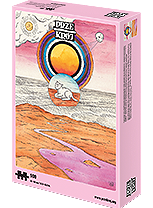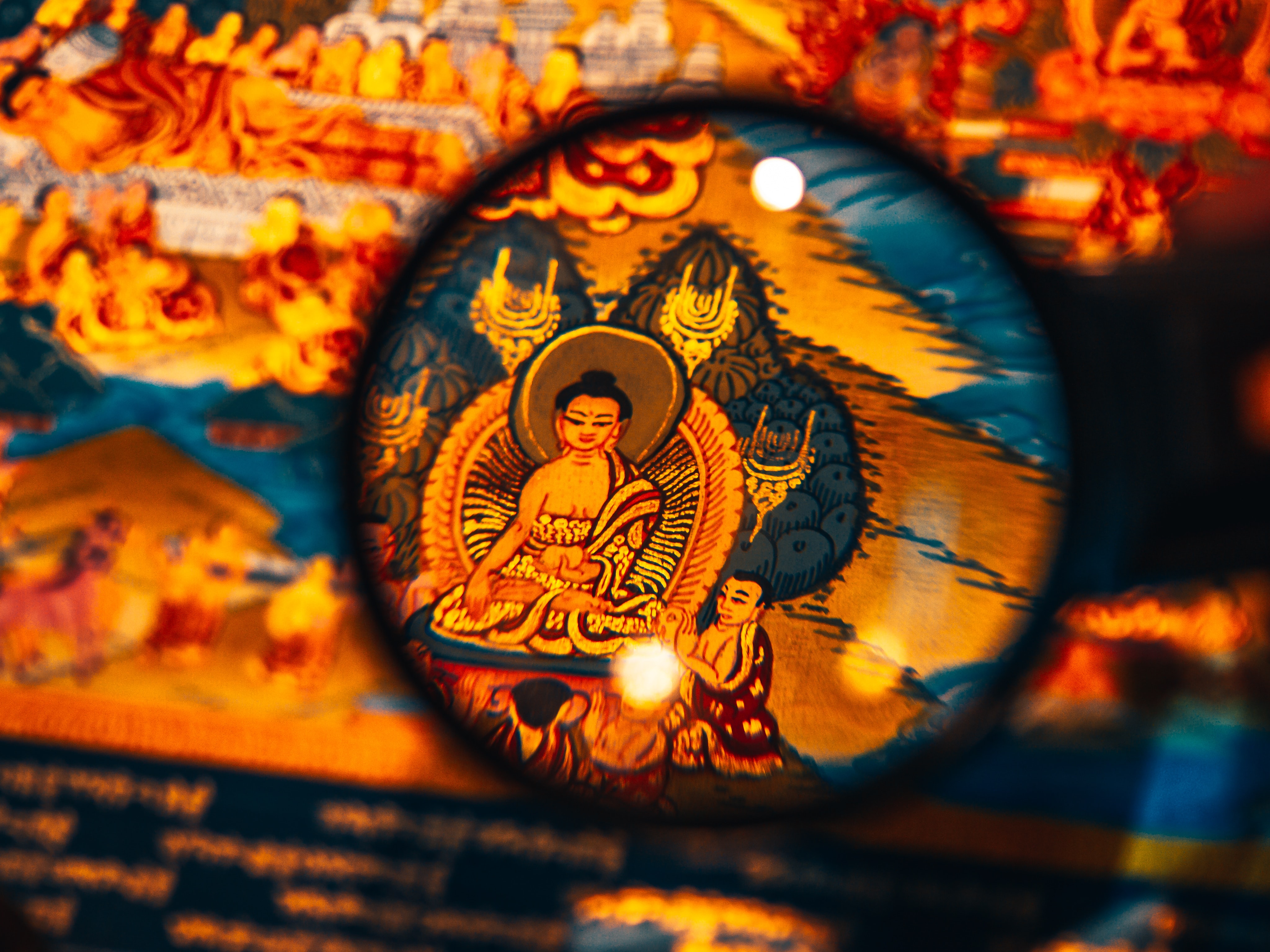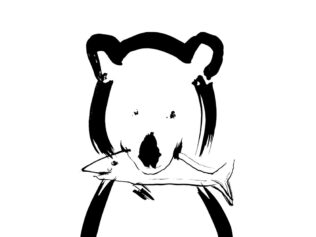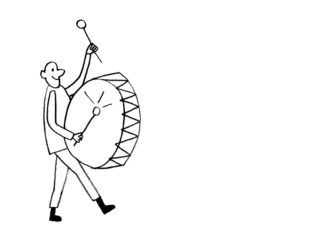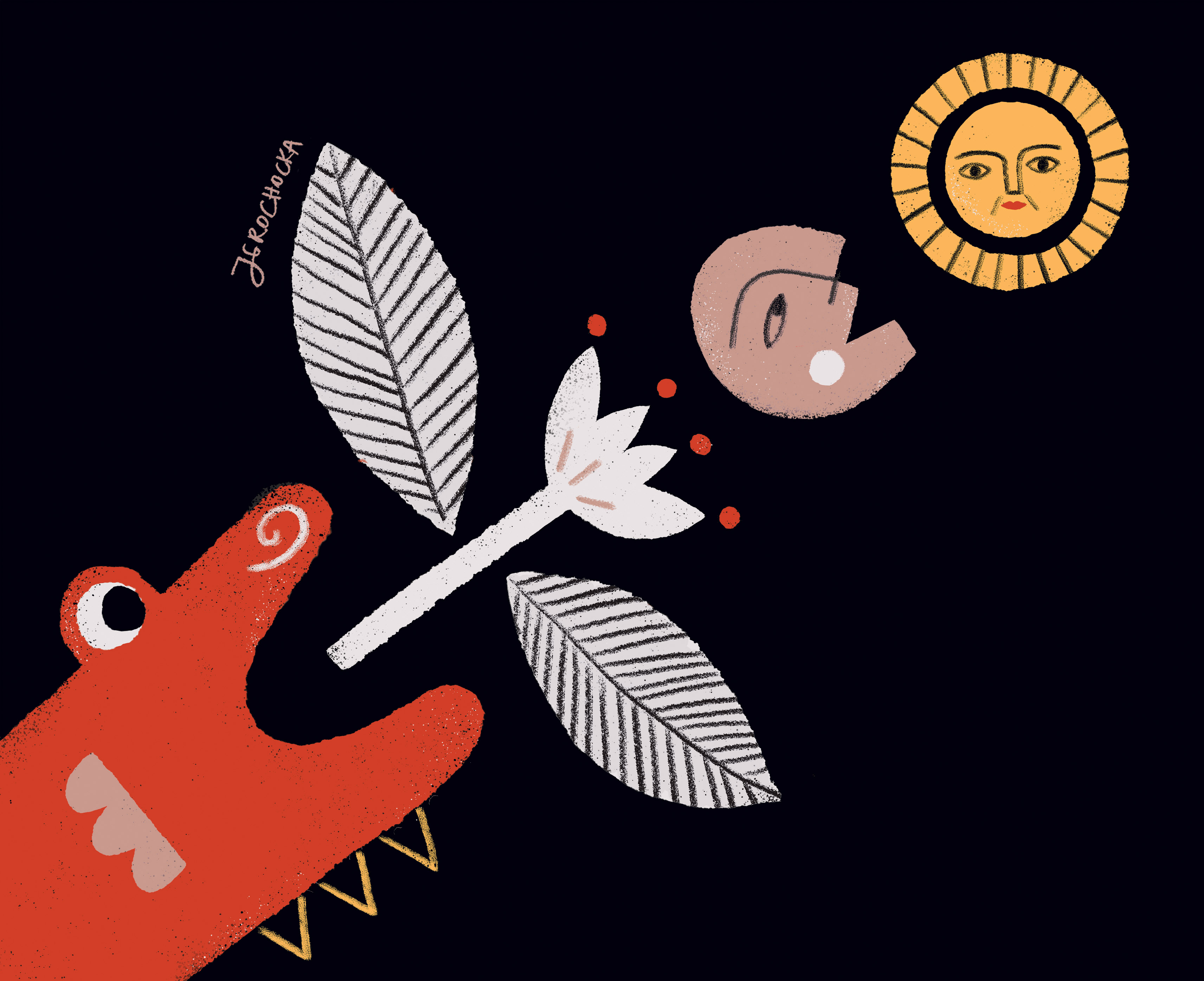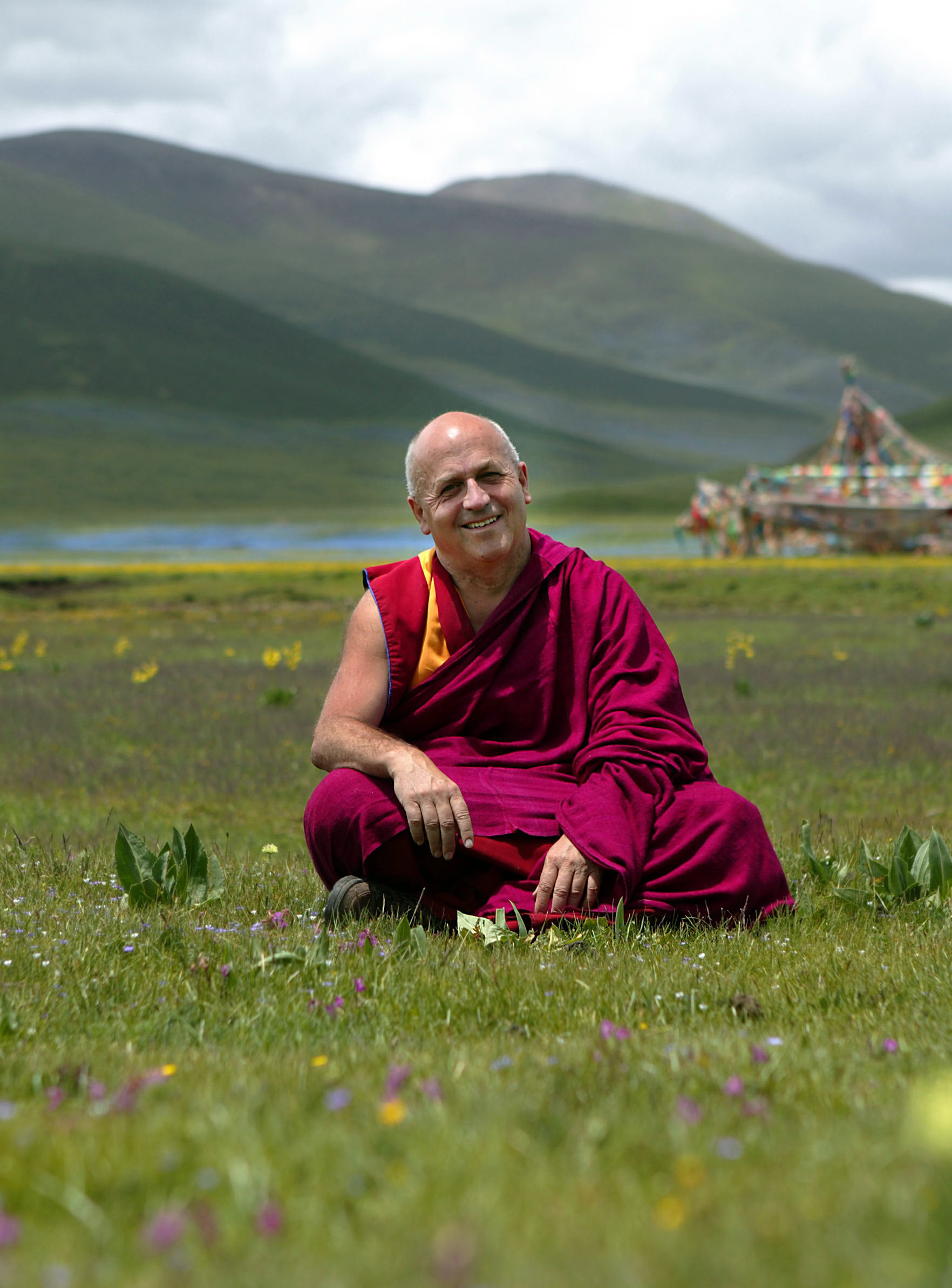
For three years, he meditates in a mountain cabin, then puts on his sports shoes and sets off on a journey. Having gathered plenty of spiritual energy, he shares it with people he meets on his way. Meet Lama Govind Rinpoche!
He is the spiritual son of Milarepa, considered one of Tibet’s most renowned saints. He spends most of his life meditating and when he ends his solitary mediation, he embarks on yatra. In Eastern traditions, this is a pilgrimage to holy places, but Lama Govind Rinpoche meets with regular people, who transform into yatris along the way. They believe he shares with them the light and divine energy he has gathered over long months of solitary meditation, tantric practice and mantra chanting. He gives people blessings, blows into their drinks and pours rice. “I don’t know why people need my blessings. They think I am someone special. Perhaps that’s because I meditate?” he wonders in Jaap Verhoeven’s documentary The Mountain Yogi.
The path towards enlightenment
Lama Govind Rinpoche follows the example of Milarepa – a Tibetan monk, poet and saint, who lived at the turn of the 11th and 12th century. Meditating in the ‘Great Cave of Conquering Demons’, he created a new path of spiritual growth (dharma). Although it’s intense, rough and requires sacrifice, it has spectacular effects.
Milarepa’s biography, The Life of Milarepa, based on old testimonies, was written by Tsangnyön Heruka in the 15th century. It says that Milarepa was born into a wealthy family, who lived in a village called Tsa. His parents named him Thopaga. When he was young, he lost his father. His uncle, who was supposed to take care of him, as well as his mother and sister, took control of their family’s money, forcing them to do slave labour. Consumed by hatred towards her brother-in law and mad at the world, Thopaga’s mother requested him to study black magic and use it to take revenge on his uncle. His teacher Yungton of Nak – ‘Great and Terrifying Magician of Evil Spells’ – didn’t know deadly spells, however, and sent him to study with Khulungpa, the ‘Ocean of Virtue’ instead. As his apprentice, Thopaga acquired the skills he needed.
Having mastered the most difficult spells, he went to the mountains near the village and destroyed his uncle’s house; it collapsed, causing the death of 34 people. Both his uncle and aunt managed to escape death, though. Then Thopaga’s mother persuaded him to bring a hailstorm over the village to ruin all the crops. Even though he avenged his family, Thopaga didn’t feel satisfied, but growingly anxious and guilty. Fate brought him to Marpa, who became his new teacher. For many years, Marpa wouldn’t ordain Thopaga, since he believed his heart remained filled with anger and resentment. While other students were ordained quickly, he was instructed to build and destroy houses, one after another.
Eventually, when Thopaga broke down completely and wanted to take his life, Marpa decided that his heart was open and he was ready for initiation. During the long-awaited ordination ceremony, he was named Milarepa. It soon turned out that he’d gained profound insight into Marpa’s teachings and easily noticed they were incomplete. Together, they went to India to meet Daikini, who passed onto them the lacking elements of knowledge. Because of his determination, Milarepa overpowered his ego and managed to escape the cycle of samsara, which traps a person in the earthly cycle of life and death. Once a murderer and evil sorcerer, he metamorphosed into an enlightened man, who through spiritual practice stopped suffering and entered nirvana.
Alone, but with others
Milarepa created a practice known as Ngak, which next to dō – the path of the Buddha followed in temples – is a method of spiritual growth. It’s spontaneous and takes place in seclusion, close to nature, for instance in caves, backwoods or mountainsides. Lama Govind Rinpoche follows Milarepa’s path.
Dharma is an everlasting spiritual path, which has its roots in India. It started to exist in Tibet thanks to Marpa and Milarepa. It consists of 10 rules that encompass patience, forgiveness, self-control, control of senses, honesty, sanctity, reason, knowledge or learning, truthfulness, and absence of anger. Dharma is both a way of life in accordance with these rules and a path towards enlightenment.
Despite his modest physical appearance, Lama Govind Rinpoche is endowed with enormous spiritual power, which increases through challenging and strenuous practice (sadhana). For three years or longer, he mediates in a cabin built from metal sheets and old wooden planks. It’s located on the Nesang mountain near the village of the same name. Many gurus have meditated there before, which helps Rinpoche concentrate and enter a contemplative state.
Every few days, his helper, Ram Kede Negi, brings him some provisions: mainly rice, potatoes and atta (wheat flour), which can be easily used to prepare meals. They never talk: Rinpoche communicates his needs through short notes. In the winter, the snowfall there reaches over three centimetres: “There’s little oxygen here, like on the moon,” says Rinpoche, “but the obstacles are everywhere, no matter where you practice. They’re exactly what you need to face.”
During yatra, Rinpoche just walks straight ahead. When asked where exactly he’s heading, he says he doesn’t know – he follows his ‘own path’. People join him throughout the entire journey. As they walk together, others greet them, sing, and ask for blessings or help – for instance, to bring offspring into this world. “Tell your daughter-in-law to drink this water,” he says and blows into the bottle. He gives blessings to both children and adults, placing his hand on their heads. People are so moved that they cry.
When Lama Govind Rinpoche reaches a bigger town, he sits down on a platform, where people leave food. His helper gives him some drinks, which he blesses with a quick blow. People come to him, hoping to be cured – usually not from any physical diseases but from the lack of spiritual power caused by evil spirits or dark energy. Many believe that Rinpoche’s blessings destroy evil powers.
In between the meetings, Rinpoche marches energetically, accompanied by a group of people, including his helper. He wears a cape made from grey waterproof material. One can see his thin legs in sports shoes.
As he says: “If you can control your mind, everything is possible. Lack of awareness and karma are like a cloud. They need to be dispersed – then the mind becomes clear and pure.”
Translated from the Polish by Joanna Mąkowska

